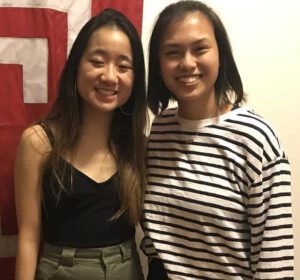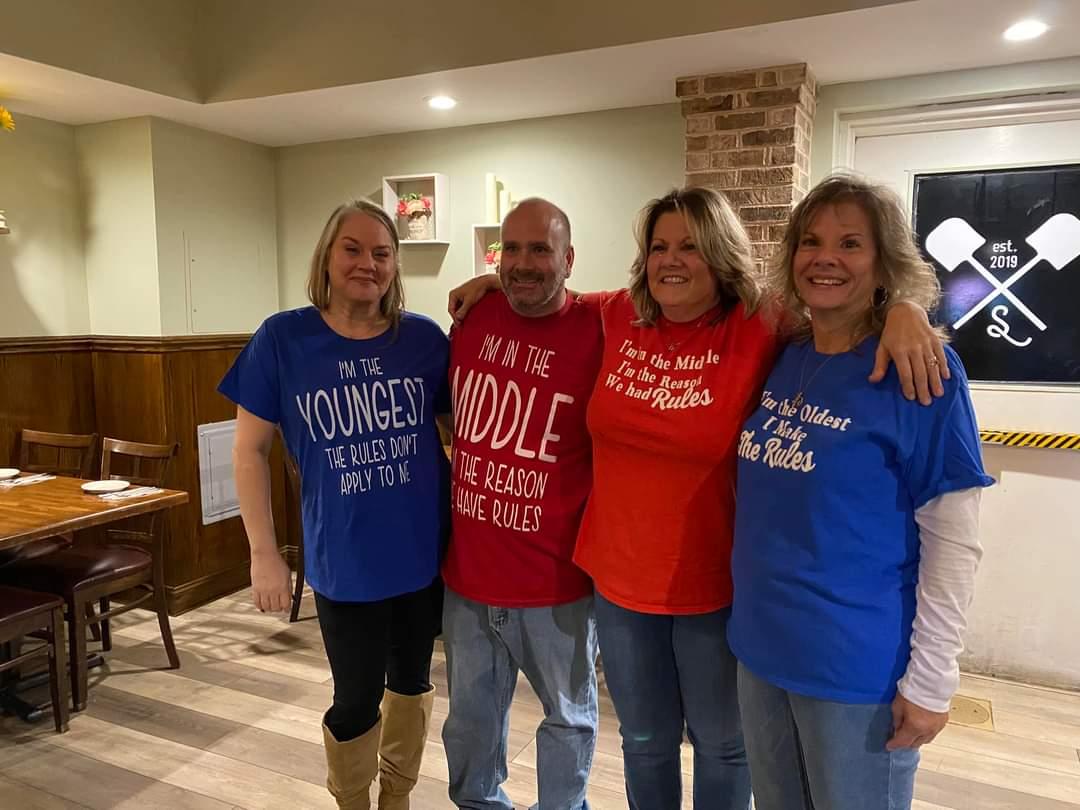By Rachael Rifkin
November is National Adoption Awareness Month, which recognizes the importance of adoption not just for the more than 7 million Americans adoptees, but the nearly 100 million Americans who have an adoptee in their immediate family.
In honor of National Adoption Awareness Month, we wanted to share Claire Mitchell and Stefanie Beard’s story.

Stefanie, on the left, and her new-found cousin Claire.
Like many adoptees, the two twenty-somethings, turned to DNA testing to find out more about themselves. They wanted to know more about their ancestry, maybe find some biological relatives, and explore the health side of testing.
Claire and Stefanie live only 12 miles apart in Pennsylvania, but the two didn’t know each other.
That all changed after using 23andMe and discovering that they were first cousins once removed. As they got to know each other they learned something more. They don’t just share DNA. Twenty years ago both young women were adopted from the same town and orphanage in China.
“Both of our minds are blown,” Stefanie told the Philadelphia Inquirer earlier this year.
The First Connection
Their surprising story began four years ago when Claire, 20, who now attends Bryn Mawr College, submitted her DNA to 23andMe. She hoped to find biological relatives.
Fast forward to Christmas last year when Stefanie, now a 22-year-old student at Temple University in Philadelphia, decided to use 23andMe with her sister Kristyn, who was also adopted from China.
Stefanie was more interested in settling a longstanding debate between her and Kristyn — who had a higher percentage of Chinese ancestry in their DNA. (Stefanie turned out to be 77 percent Chinese and 13 percent Vietnamese to Kristyn’s 99 percent Chinese.)
What she didn’t expect was to find a biological relative, let alone one living in the United States.
What Are The Odds?

Claire, on the left, and her cousin Stefanie.
Despite the surge in DNA testing and the number of adoptees finding and connecting with relatives, for adoptees from China or Korea or other countries, it’s very rare to find a close family connection.
Like a lot of adoptees, Stefanie and Claire both grew up wondering about their birth parents. They wondered if they had other biological relatives out there. Was it possible to ever find them?
Stefanie was born in Huazhou in 1997 and Claire in 1999. When Stefanie was 11 months old, she was adopted by her parents, Donna and Michael Beard, and grew up in a loving home in Downingtown, Pennsylvania. Adopted at the same age, Claire grew up in Overland Park, Kansas. They are both the second adopted daughters in their families.
Despite wondering about their origins and biological relatives, neither Claire or Stefanie, expected to find a relative, let alone one just a short train ride away. Finding a sibling or cousin actually isn’t unheard of due to the proliferation of DNA testing.
International Adoption
The first big wave of international adoptees came from Korea after the Korean war. China became a primary origin for adoptees after the creation of China’s one-child policy in 1980. The policy, instituted to slow population growth and avoid famine, resulted in the abandonment of thousands of children (often girls, since boys were preferred for a variety of cultural, social and economic reasons).
To combat the problem, China began its international adoption program with many children ending up in the U.S. China officially ended its one-child policy in 2016.
In the last few years with the end of the one-child policy, many of those adoptees and birth parents have been looking to reunite. For families in China trying to find their children, there are even social media platforms like WeChat and the birth family search company My Taproot, to help families find and connect with each other.
Using DNA to Help in the Search
While DNA testing offers a simpler way to connect with biological relatives, it is more difficult for adoptees from China to find matches because most of those on these sites come from the United States.
That’s what makes finding each other so special said Claire and Stefanie.
“It was unreal. To hear from her and see that she was such a close match as a relative was unbelievable. Even more shocking was the fact that she went to Temple (like 9 miles away from my school) and her family lived in the area. It was insane in that regard,” said Claire.
Getting to Know Each Other
Since they initially matched up on 23andMe, they’ve gotten together quite a few times. They’ve met up to watch the Dragon Parade for Chinese New Year, gone to dinner and the movies. Claire and Stefanie have spent the shorter holidays together at Stefanie’s family’s house since they live in Pennsylvania.
In fact, Claire will be coming over to their house this Thanksgiving. They get along really well and enjoy spending time together. In general, they try to meet up at least once a month. Mostly they eat and talk, making up for lost time.
Becoming Part of the Family
At that first meeting, Stefanie met Claire at her train station to go to dim sum in Chinatown. Stefanie and Claire both texted their moms a picture of the two of them together. Their moms had the same reaction— “Tell her we say welcome to the family!”
“It was such a happy moment. My heart was so full that night. The universe wanted this to happen. There’s no other explanation,” said Stefanie.
Claire agreed.
“To have actually been able to meet a blood relative of mine who’s only separated by perhaps our great-grandparents have made me feel just a little less lonely in a world full of people who seem to know each other in the way that only biological kin can,” said Claire.
Rachael Rifkin’s work focuses on bridging the gap between generations, cultures, and backgrounds through storytelling. She also once recreated eight photos of her relatives to highlight the traits and stories we all share with our families.




